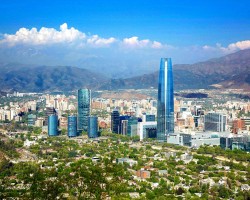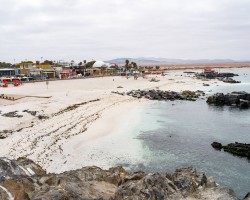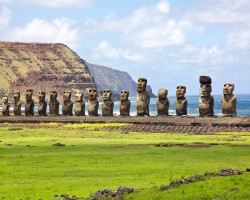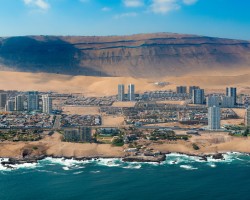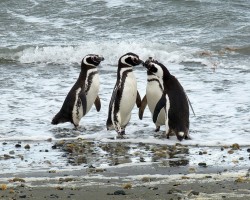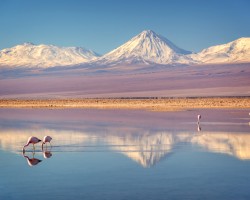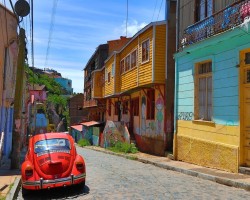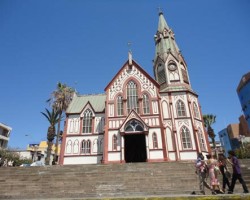Best time to go to Chile for a perfect weather and where to go?
When is the best time to go to Chile?
There isn't really a best time to visit Chile. It will all depend on what kind of experience you're looking for and which region you plan to explore!
Stretching over nearly 4,300 kilometers from north to south, between the 17th and 56th parallel, the country benefits from very diverse climates and can be visited throughout the year. However, if you want to get an overall view of Chile and discover its many geographical aspects, it's best to avoid the austral winter, between early June and late August.
When to visit Chile based on regions?
- The north can be visited at any time of the year, but it's between November and May that you'll have the most pleasant temperatures and can enjoy beach activities. It's also the right time to explore the driest hot desert on the planet, in the moon-like landscapes of San Pedro de Atacama.
- The central region and the capital, Santiago, are best explored during the austral summer, between December and March. At the end of the season, many wine harvest festivals take place in the local vineyards, a great opportunity to discover another aspect of Chile! Spring and autumn are cooler and rainier, while in winter, in July and August, the atmosphere is humid and cool, even cold.
- Southern Chile is ideally visited from November to March. The weather in July and August is particularly rainy. However, in the Andes mountain range, snow is abundant, offering a memorable skiing experience.
- Patagonia and Tierra del Fuego have harsh weather conditions throughout the year. But if you dream of going there, opt for the summer months. Indeed, January and February are the mildest.
- Easter Island and its incredible Polynesian culture can be discovered all year round thanks to its idyllic weather. If you plan to surf there, prefer the months from October to March, as days without waves are rare and the water temperature is very pleasant.
Unsurprisingly, the peak tourist season in Chile runs from November to February, with the highest influx of visitors in January, at the height of the austral summer. If you prefer tranquility, traveling in spring or autumn can be a good option. The same goes if you're on a budget: the cheapest month to fly to Santiago, Chile is March. Conversely, during the school holidays in Europe, such as July and August, flight prices soar.
Where and when to go based on the weather?
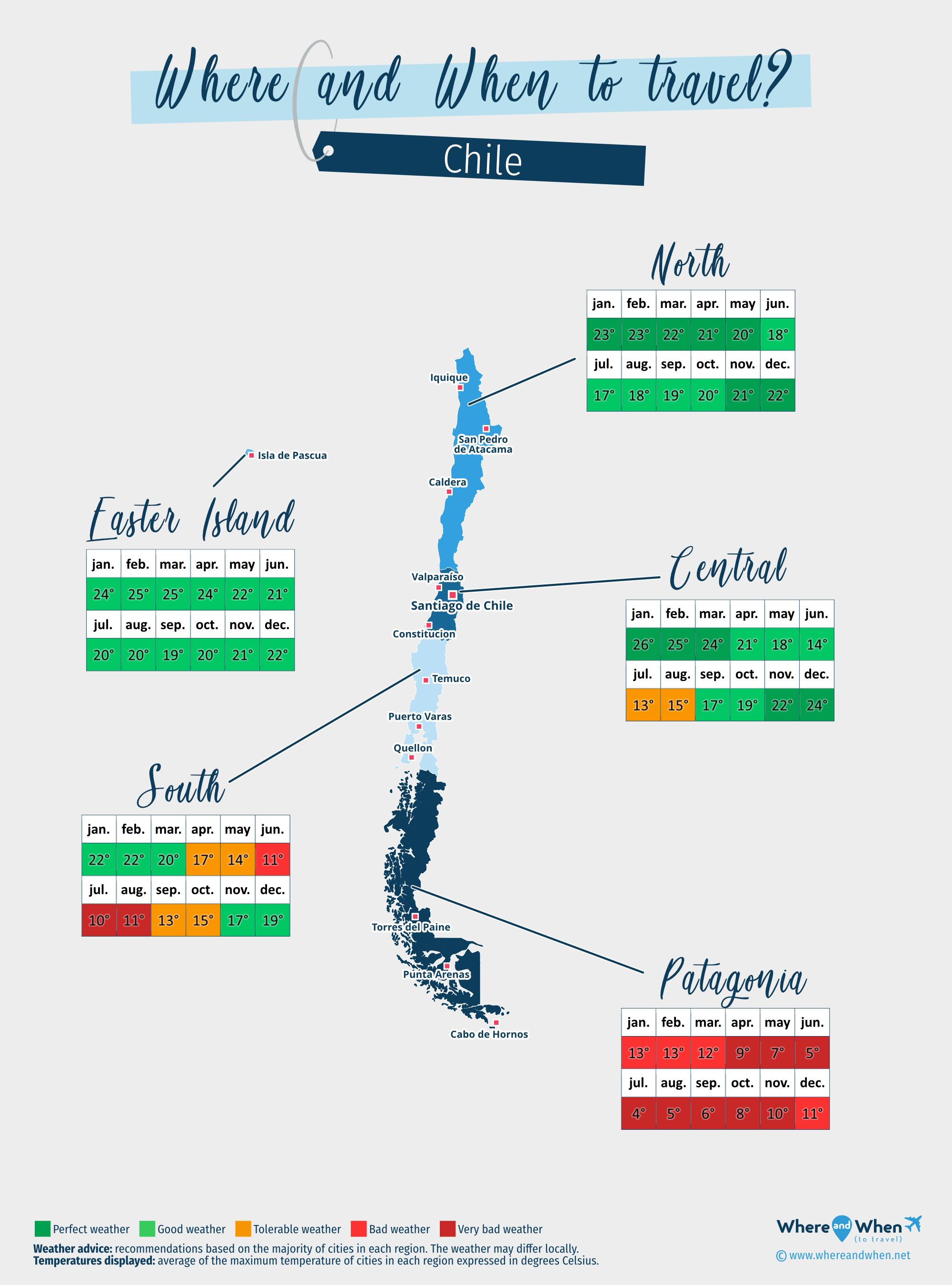
Central of Chile
Santiago, Valparaiso, Constitucion...
Easter island
Easter island...
North of Chile
San Pedro de Atacama (Atacama Desert), Iquique, Caldera...
Patagonia
Punta Arenas, Cape Horn, Parque Nacional Torres del Paine...
South of Chile
Puerto Varas, Temuco, Quellon...
To get all the information about the climate and weather in Chile for a specific month, click on the corresponding link below:
Chile in january Chile in february Chile in march Chile in april Chile in may Chile in june Chile in july Chile in august Chile in september Chile in october Chile in november Chile in december
Best time to travel to Chile by cities
Climate and Weather in Chile
The country being very stretched from north to south, the climate of Chile is incredibly varied. Here are the dominant types:
- The Mediterranean climate with mild summers is the most common and enjoyed by the capital, Santiago de Chile, as well as its neighbor, Valparaíso.
- The oceanic climate with mild summers is much more prevalent in the south, especially around Puerto Varas.
- A cold and dry desert climate prevails in the area of Iquique, on the northern coast.
- A polar tundra climate cools the areas located in the south of the country, especially around Punta Arenas, in Patagonia.
In addition, there are various microclimates present throughout the country. As you may have understood, the weather in Chile will depend on several determining factors, such as altitude, ocean currents, or latitude.
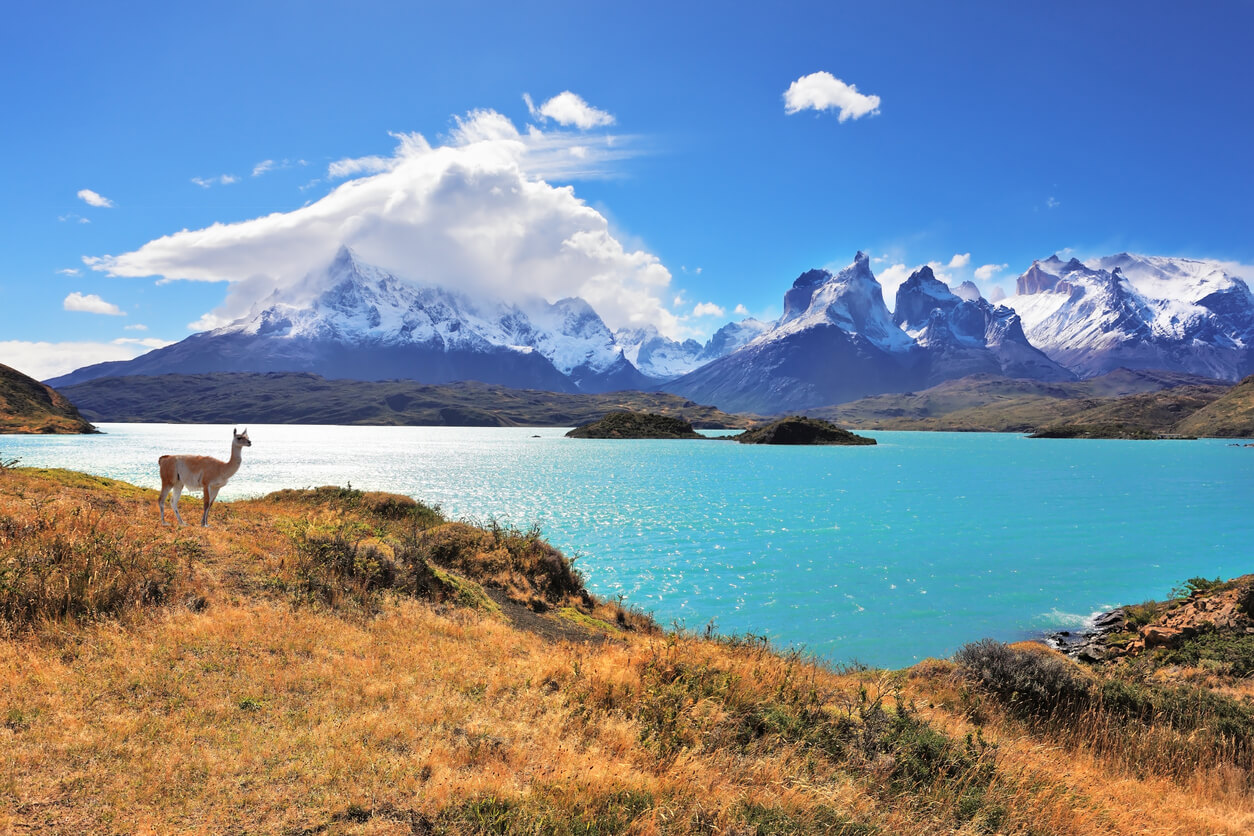
Climate in northern Chile
With its generally desert climate, the northern part of the country experiences low precipitation. This is due to the presence of a cold ocean current, which prevents the formation of clouds capable of producing rain. However, even though it doesn't rain, the air is humid and the weather can be foggy, especially around Arica and along the coast between April and October.
Conversely, during the austral summer, from November to March, the weather is perfect on the coast and allows for beach enjoyment. The average temperature ranges between 23 and 26°C (79°F) at the hottest time of the day. In Iquique, known for its vast sandy beaches, the temperature of the Pacific Ocean easily reaches around 23°C (74°F) in January and February.
In San Pedro de Atacama, known for its desert, the air is much drier. In the plains, temperatures are mild year-round, with highs between 15 and 23°C (74°F) . During winter, especially in July and August, nights are very cold, with lows around 5°C (41°F) .
Similar to the south, the region also experiences a tundra-like polar climate in Lauca National Park, in the extreme north of the country, near the border with Bolivia. Temperatures there range between 10 and 13°C (56°F) year-round.
Climate in central Chile
Central Chile has a Mediterranean climate, with well-defined seasons:
- In summer, from December to March, it is hot and sunny. In Santiago, temperatures peak around 26°C (79°F) in January. Towards Valparaíso, on the coast, temperatures are generally 1 or 2 degrees lower.
- In autumn, from April to June, temperatures gradually decrease, averaging around 15°C (59°F) by the end of the season. Simultaneously, precipitation increases, with June being the rainiest month of the year in this region of Chile.
- In winter, from late June to late September, it is relatively mild with highs between 14 and 18°C (65°F) . However, the weather is often gray and humid, making it less than ideal for outdoor activities.
- In spring, from late September to early December, the weather gradually warms up, with temperatures exceeding 20°C (68°F) as early as October. While there may still be some showers in September, precipitation becomes almost nonexistent as the season progresses.
As one gains altitude and heads to the Andes mountain range, the climate gradually changes to a tundra-like polar climate in the Portillo region. From June to September, temperatures hover around 0°C (32°F) , while during the austral summer, in January and February, highs reach 13°C (56°F) at most.
Climate in southern Chile
Predominantly oceanic, the climate in southern Chile is characterized by rainy and temperate weather. Precipitation is frequent and abundant, and westward winds can be strong, especially between April and October.
During the austral winter, particularly in July and August, there can be up to 20 days of rain per month in Puerto Varas. However, temperatures remain at acceptable levels, with daytime averages around 13°C (56°F) .
In the favorable season, between November and March, rainfall decreases and temperatures can exceed 30°C (86°F) in January in the northern part of the region. But as one moves further south, the climate becomes colder. For example, near Pumalin Park, summers are very short and temperatures rarely exceed 20°C (68°F) . Near Patagonia, glaciers and eternal snow are visible.
Climate in Chilean Patagonia
In the far south of the country, in the area between Chiloé Island and Cape Horn, the weather is cold, very windy, and changes rapidly. Additionally, there is a significant temperature range and abundant precipitation throughout the year.
Patagonia has three main types of climate:
- Short and cool summer oceanic climate around Puerto Natales.
- Tundra-like polar climate in the Punta Arenas region.
- Mild oceanic summer climate in Isla Magdalena National Park.
The summer austral season, between December and March, is unfavorable. However, it remains the best time to visit and be amazed. Nighttime temperatures hover around 0°C (32°F) , while daytime temperatures range between 14 and 18°C (65°F) . In winter, between May and late September, the weather is very harsh: nighttime temperatures approach -5°C and daytime temperatures struggle to rise above 10°C (50°F) . Add to that icy winds and often overcast skies.
Climate on Easter Island
A change of scenery awaits on Easter Island. Located at the eastern tip of the Polynesian triangle, it enjoys a humid subtropical climate, without a dry season and with hot summers. In summary, it is possible to visit year-round, with temperatures rising above 20°C (68°F) in all seasons. The hottest months are February and March, with averages around 25°C (77°F) . Thanks to warm ocean currents, the water temperature is always about 2°C (36°F) higher than the air temperature. Regarding precipitation, it is fairly stable throughout the year, with an average of 4 to 6 rainy days per month, with January being the wettest month.
Temperatures and rainfall in Chile
On these 3 graphs, we present the evolution of temperatures of Chile and month-by-month rainfall for the cities of Santiago, Caldera, Easter island, Iquique and Punta Arenas, as well as the month-by-month sea temperature for coastal cities.

Peak visitor numbers and tourist seasons in Chile
Find out when Chile has its high tourist season (the period when the influx of tourists is highest) and off-peak tourist season using our data and figures.
Tourist seasons in Chile
The months with low numbers of tourists are: March, April, May, June, July, August, September, October and November. The number of visitors to Chile is high in: January, February and December.
- Very low season in Chile: May, June and September.
- Low season in Chile: March, April, July, August, October and November.
- High season in Chile: February and December.
- Peak season in Chile: January.
Figure: Visitor index for Chile month by month
Average price for flights to Chile
A return flight between Sydney and Santiago is generally cheaper if you go in june ($ 1563 on average): this is the best time for travellers on a tight budget. In contrast, you may end up paying $ 958 more for your airline ticket to Santiago if you go in december.
Where to go in Chile?
This table allows you to see the maximum temperature for each city and our opinion on the weather month by month (see colour legend below the table).
| Cities | jan. | feb. | mar. | apr. | may | jun. | jul. | aug. | sep. | oct. | nov. | dec. |
| Santiago | 79°F | 77°F | 77°F | 72°F | 67°F | 59°F | 58°F | 61°F | 65°F | 68°F | 72°F | 76°F |
| Caldera | 74°F | 76°F | 74°F | 72°F | 68°F | 67°F | 63°F | 65°F | 67°F | 67°F | 68°F | 70°F |
| Easter island | 76°F | 77°F | 77°F | 76°F | 74°F | 70°F | 70°F | 68°F | 68°F | 68°F | 70°F | 74°F |
| Iquique | 77°F | 79°F | 77°F | 76°F | 74°F | 72°F | 70°F | 70°F | 70°F | 72°F | 74°F | 76°F |
| Punta Arenas | 56°F | 56°F | 54°F | 50°F | 47°F | 43°F | 41°F | 43°F | 47°F | 50°F | 52°F | 54°F |
| San Pedro de Atacama (Atacama Desert) | 74°F | 74°F | 72°F | 68°F | 63°F | 59°F | 59°F | 63°F | 67°F | 70°F | 74°F | 74°F |
| Valparaiso | 74°F | 74°F | 72°F | 70°F | 67°F | 63°F | 61°F | 63°F | 63°F | 67°F | 68°F | 72°F |
| Cape Horn | 50°F | 50°F | 50°F | 49°F | 47°F | 43°F | 43°F | 43°F | 43°F | 45°F | 47°F | 49°F |
| Constitucion | 74°F | 74°F | 72°F | 68°F | 63°F | 59°F | 58°F | 58°F | 61°F | 63°F | 67°F | 70°F |
| Parque Nacional Torres del Paine | 50°F | 52°F | 50°F | 47°F | 41°F | 38°F | 38°F | 40°F | 43°F | 45°F | 47°F | 49°F |
| Puerto Varas | 68°F | 68°F | 65°F | 59°F | 56°F | 50°F | 50°F | 52°F | 54°F | 58°F | 61°F | 65°F |
| Quellon | 63°F | 63°F | 61°F | 58°F | 56°F | 52°F | 50°F | 50°F | 52°F | 56°F | 58°F | 61°F |
| Temuco | 79°F | 79°F | 76°F | 68°F | 59°F | 54°F | 52°F | 56°F | 59°F | 65°F | 70°F | 74°F |
| Archipielago Juan Fernandez | 67°F | 68°F | 68°F | 67°F | 65°F | 61°F | 59°F | 59°F | 58°F | 59°F | 61°F | 63°F |
| Arica | 77°F | 79°F | 77°F | 76°F | 72°F | 70°F | 68°F | 67°F | 68°F | 70°F | 72°F | 74°F |
| Bahía Mansa | 74°F | 74°F | 70°F | 63°F | 56°F | 52°F | 50°F | 52°F | 58°F | 61°F | 67°F | 68°F |
| Caleta Yungay | 61°F | 63°F | 58°F | 50°F | 43°F | 38°F | 38°F | 40°F | 43°F | 49°F | 54°F | 58°F |
| Cerro Sombrero | 54°F | 54°F | 54°F | 50°F | 47°F | 43°F | 41°F | 43°F | 45°F | 49°F | 50°F | 52°F |
| Chañaral | 77°F | 77°F | 77°F | 74°F | 72°F | 70°F | 68°F | 70°F | 70°F | 70°F | 72°F | 74°F |
| Chiloe Island | 65°F | 65°F | 63°F | 59°F | 56°F | 50°F | 50°F | 50°F | 52°F | 56°F | 59°F | 61°F |
Legend:
perfect weather
good weather
tolerable weather
bad weather
very bad weather
About Chile
What can I do in Chile?
Beaches / swimming
Nature and countryside
Culture and heritage
Sports
Family travel
Crafts / shopping
Gastronomy
Nightlife
Is this weather information for Chile reliable?
Climate data for Chile has been gathered every day since January 2009. The analysis of these meteorological data for Chile allows us to determine the average for each month in Santiago, Caldera, Easter island, Iquique, Punta Arenas, San Pedro de Atacama (Atacama Desert), Valparaiso, Cape Horn, and 84 other cities.
So yes: this data is reliable except in cases of temporary climate disruption in the region.

